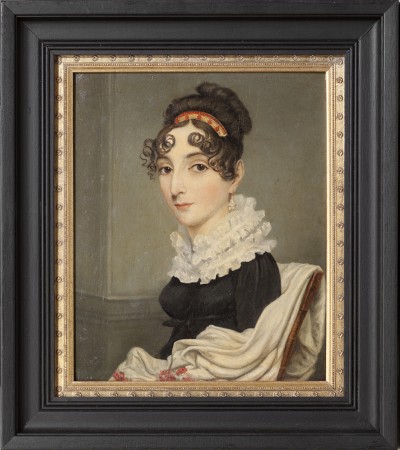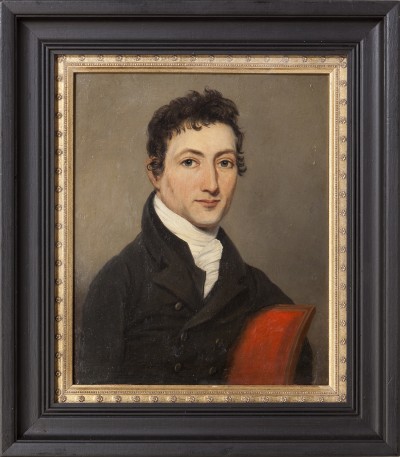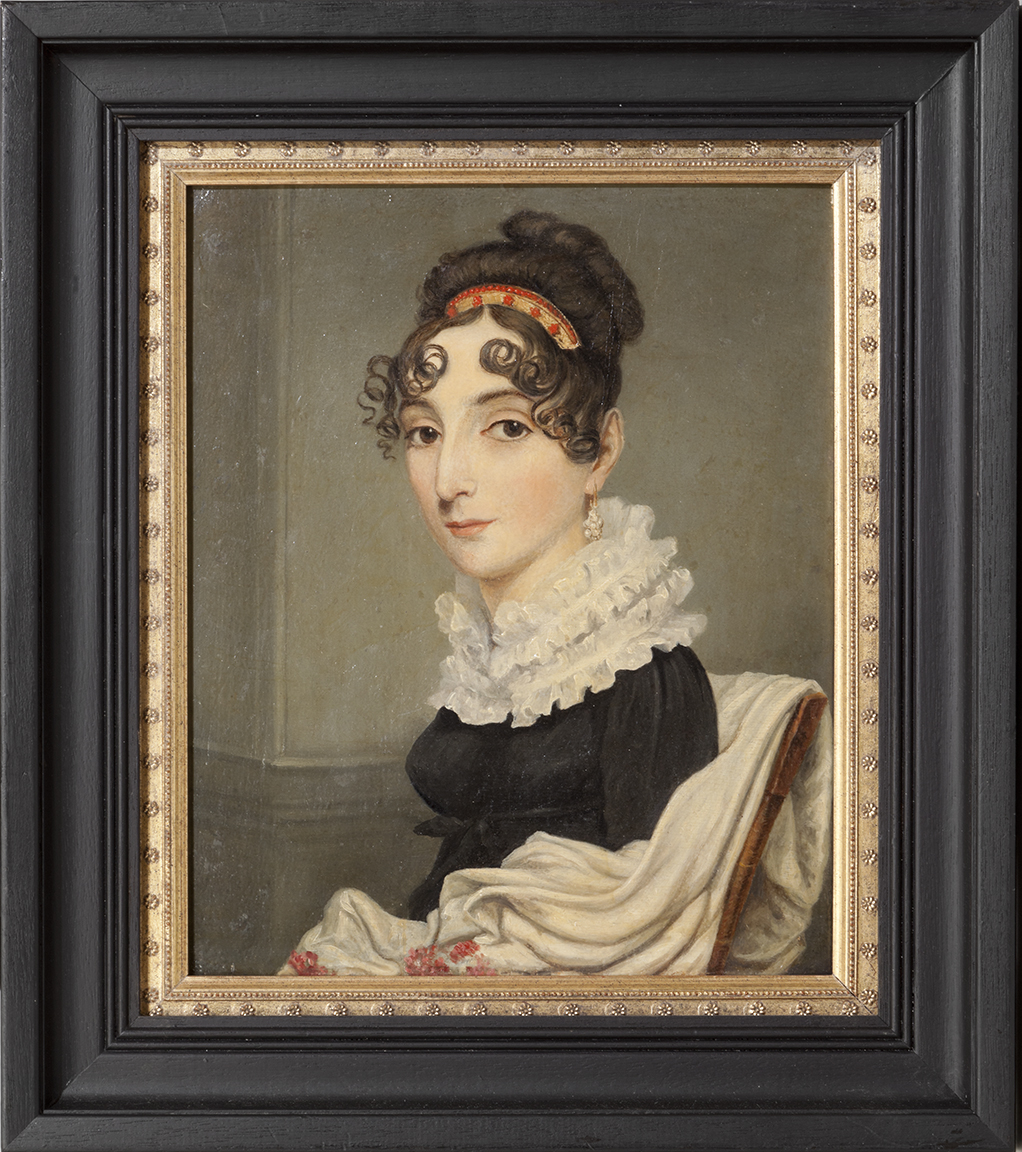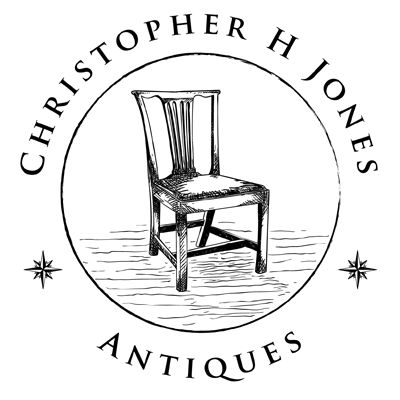
 PORTRAITS OF STEPHEN & MARY CARRE HONEYWELL
PORTRAITS OF STEPHEN & MARY CARRE HONEYWELL
OIL ON PANEL ~~ CIRCLE OF THE PEALE FAMILY
PROBABLY ANNA CLAYPOOLE PEALE (1791-1878)
BALTIMORE, MARYLAND ~~ CIRCA 1814
10” X 12”
Commentary: Anna Claypoole Peale was a daughter of James Peale (1749-1831) and, like her father, is best known as a miniaturist. But like most of the prolific Peale family, she apprenticed within the family and painted portraits in a variety of sizes before settling on miniatures as her specialty. By 1810, Anna was working regularly with her father in his studio, which served as a classroom and workshop. Not surprisingly, there are significant similarities in style and technique. As one expert on the Peales has pointed out, members of the family worked in all sizes and did not hesitate to complete each other’s work and as a consequence it can be very difficult to determine authorship of paintings and portraits that members of the family produced. These portraits display many elements characteristic of the Peale style, particularly James’, without being as fully developed as his work from this period. They are however closely related to the known examples of Anna’s early work and may well represent an early stage of her developing technique. By age fourteen Anna was working seriously at developing her skills, was working as an apprentice by age sixteen, and shortly thereafter began accepting independent commissions. The “first professional woman to emerge in the Peale family” by 1811 Anna had sold her works at auction, exhibited her works publicly and been invited to show at the Pennsylvania Academy. She traveled frequently to New York, Baltimore and occasionally Washington and was listed in catalogues and directories in these cities as well as Philadelphia.
The Peales had deep roots in Philadelphia, Baltimore and Maryland. Anna’s father James was the youngest brother of Charles Willson Peale and both were born in Chestertown, Maryland. Baltimore was a growing commercial and population center during the early Federal period and members of the Peale family were quite active in the city’s artistic affairs. Levels of cultural, economic and social interaction between the neighboring cities were high and it remains quite common to find records of artisans passing chapters of their careers in both cities. In 1812 Rembrandt Peale established in Baltimore a branch of the museum founded by their father in Philadelphia and painted numerous portraits for Baltimore sitters. His uncle James and cousin Anna were frequent visitors and “An ascending merchant class in Baltimore and Philadelphia was attracted by Anna’s manner who wrote in 1819 that she was overcome with the flow of commissions. The Carres – whose families were well known to the Peales in Philadelphia – were among these Baltimore sitters for Anna, possibly in collaboration with James, and would have been completed during the years shortly after the 1812 marriage of Stephen and Mary.
Mary Magdalene Carre (1787-1825) was very probably the daughter of Charles Carre who had arrived in America from France at some point prior to 1795. While his brother, John Thomas Carre (c.1744-1825)(Diary at APS) had arrived in Philadelphia with his family from Santo Domingo as a refugee from the slave revolts of the 1790s, Charles seems to have emigrated from Normandy, possibly to escape the turmoil of the Bonaparte regime. Jean Thomas Carre was well known in Philadelphia where he associated with Charles Willson Peale and other members of the American Philosophical Society, among other civic organizations. Both brothers seem to have taught privately and provided translation services to support themselves – Charles Carre offered his services as a teacher of the French and English languages in a Philadelphia newspaper as early as 1795. A few years later, in 1804/6, Charles Carre and his brother founded Clermont Seminary for young men near Philadelphia, but details of Charles’ life before and after these events are unclear. Large numbers of French citizens found refuge in the United States with Philadelphia and Baltimore hosting significant expatriate communities and,
According to the inscription on the verso of the panel, Mary Carre attended the academy for young women at Emmetsburg, Maryland although this cannot be confirmed from surviving records. The Baltimore Federal Gazette reported on July 17, 1812 that Miss Mary Magdalene Carre and Stephen Honeywell (1787-1832), both of Baltimore, had been married by the Reverend [Enoch] Fenwick at Saint Peter’s church. They had seven children.
Of Stephen Honeywell little is known. J. Thomas Scharf notes that Honeywell was appointed a bank official in 1823 but was forced by ill health to resign this position just three years later. After Mary’s death in 1825, Stephen married Mary Ann Porter, also of Baltimore.
Primary Resources: Miller, Lillian, The Peale Family, Creation of a Legacy.
Miller, Lillian, The Selected Papers of Charles Willson Peale, Vol. 2, Part 1.
Ealam, Charles, The Peale Family, Three Generations of American Artist
Sellers, Charles Coleman, Charles Willson Peale
Price: sold


